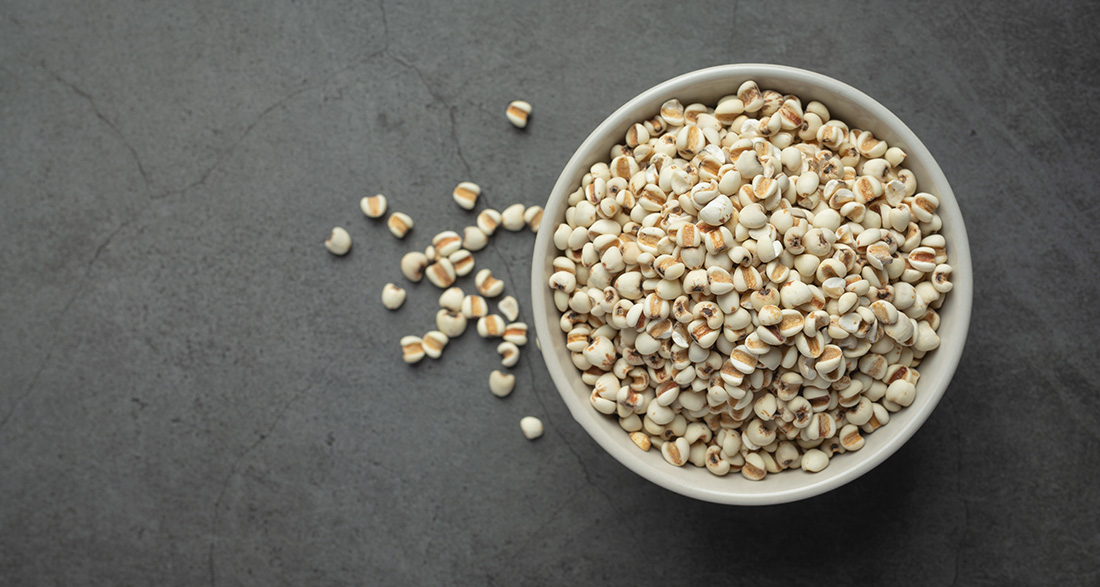Is millet suitable for dogs as a grain, and what health benefits does this gluten-free grain offer? Learn more here.
Millet for Dogs: The Tiny Super Grain and its Benefits for Dogs
Millet may raise questions among many dog owners about its suitability for canine nutrition—after all, it is considered a grain, which is often deemed less digestible in large quantities and unsuitable for nutritionally sensitive four-legged friends. However, quite the opposite is true: Millet, as a gluten-free grain, belongs to the hulled grain category and has several advantages over wheat. But what makes millet so healthy for dogs, and how can it be best integrated into their diet?
Why is Millet Good and Healthy for Dogs?
Millet offers your dog a variety of nutrients and an exceptionally high protein content. The small grains have the advantage of being both filling and healthy. Particularly noteworthy is the high iron content in millet, crucial for blood formation and oxygen supply. The abundance of fiber and essential amino acids in this concentrated plant power is also remarkable. But that’s not all—fluoride in millet supports teeth and bones, while vitamin C forms the basis for immune support. Millet’s easy digestibility makes it an excellent ingredient for dogs with dietary allergies. If your dog has pancreatic issues, for which millet is a great alternative in their diet.
We also understand the value of millet in nutrition. In our wet food, we combine juicy lamb with millet, peas, and pear, or turkey with millet, cottage cheese, and mango, creating a delicious treat that provides ample protein and, most importantly, delivers the best taste.
So, even though millet technically belongs to the grain category, it is not the kind that forms the largest group of allergy-triggering components.

How Do I Feed Millet to My Dog?
One thing is certain: Millet is easily digestible for your dog and packed with nutrients, allowing you to use it in their food with a clear conscience. If you want to wield the cooking spoon yourself and prepare a tasty meal for your four-legged friend, it’s advisable to consult with nutrition experts about the appropriate and healthy diet for dogs. While homemade food may be fresh, it can quickly lead to deficiencies if you’re not sure about your dog’s nutritional needs in terms of proteins, carbohydrates, fats, minerals, and fibers.
You can occasionally mix cooked millet into your dog’s food without any concerns, as a refinement, so to speak. To do this, thoroughly rinse the grains, then simmer them in a 1:2 ratio with water for about 5 minutes and let them steep covered for 30 minutes. This ensures that your dog finds it pleasant to eat and digest.
Feeding raw grains is not a good idea because protein-damaging enzymes are active in this state. Heating them makes these enzymes harmless. If you notice that your dog experiences diarrhea, vomiting, or constipation from millet, they might not tolerate it well, or you need to introduce it to them more slowly—start with small amounts, such as a teaspoon.
If you want to permanently incorporate millet into your dog’s diet, keep in mind that the grains also provide carbohydrates and fats, and the feeding quantity must be adjusted accordingly. Otherwise, the nutrient requirements will be exceeded, leading to obesity. Additionally, a balanced diet includes fresh components like fruits, vegetables, and herbs.
Millet Flakes for Dogs: How to Prepare Them Correctly
In addition to millet grains, which need to swell before being eaten or fed, millet is also available in flakes. The advantage: Millet flakes are already steamed, so they no longer contain phytic acid even without prior heating at home.
Still, pay attention to the usage instructions on the packaging. Typically, you can simply mix millet flakes into your dog’s food, although your dog may find it more pleasant if you soak them for about 5 minutes. This way, your dog reaps all the benefits of millet, and you save some time with the short preparation time.


